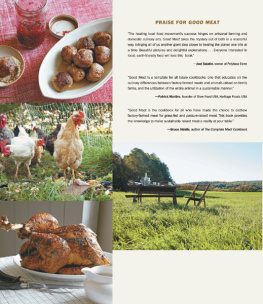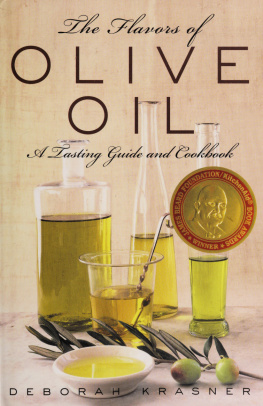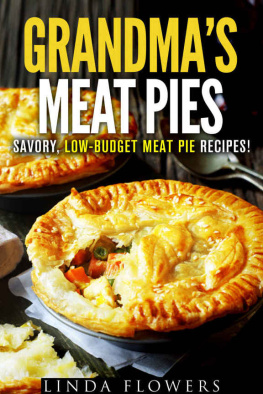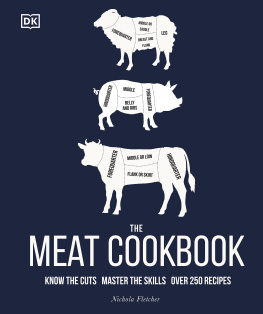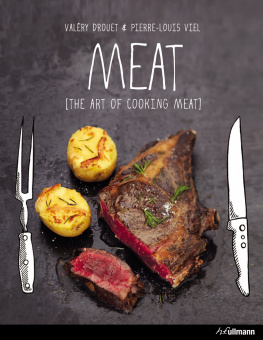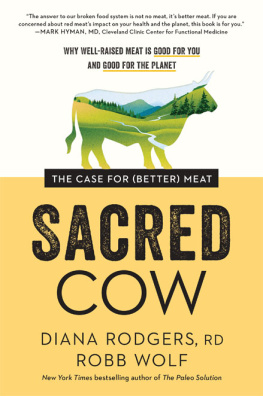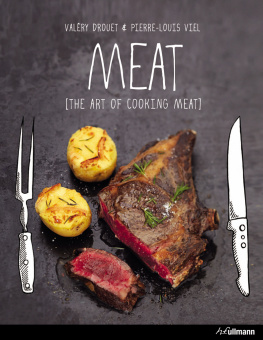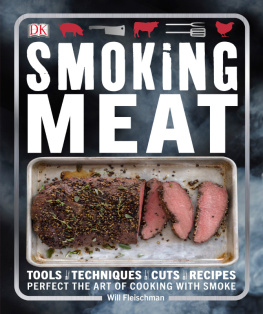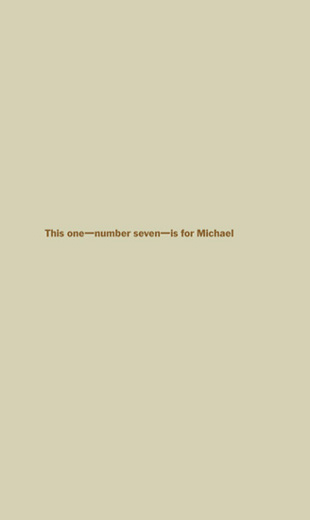Deborah Krasner - Good Meat: The Complete Guide to Sourcing and Cooking Sustainable Meat
Here you can read online Deborah Krasner - Good Meat: The Complete Guide to Sourcing and Cooking Sustainable Meat full text of the book (entire story) in english for free. Download pdf and epub, get meaning, cover and reviews about this ebook. year: 2010, publisher: Stewart, Tabori and Chang, genre: Home and family. Description of the work, (preface) as well as reviews are available. Best literature library LitArk.com created for fans of good reading and offers a wide selection of genres:
Romance novel
Science fiction
Adventure
Detective
Science
History
Home and family
Prose
Art
Politics
Computer
Non-fiction
Religion
Business
Children
Humor
Choose a favorite category and find really read worthwhile books. Enjoy immersion in the world of imagination, feel the emotions of the characters or learn something new for yourself, make an fascinating discovery.
- Book:Good Meat: The Complete Guide to Sourcing and Cooking Sustainable Meat
- Author:
- Publisher:Stewart, Tabori and Chang
- Genre:
- Year:2010
- Rating:4 / 5
- Favourites:Add to favourites
- Your mark:
Good Meat: The Complete Guide to Sourcing and Cooking Sustainable Meat: summary, description and annotation
We offer to read an annotation, description, summary or preface (depends on what the author of the book "Good Meat: The Complete Guide to Sourcing and Cooking Sustainable Meat" wrote himself). If you haven't found the necessary information about the book — write in the comments, we will try to find it.
Good Meat is a comprehensive guide to sourcing and enjoying sustainable meat. With the rising popularity of the locavore and organic food movementsand the terms grass fed and free range commonly seen on menus and in grocery storespeople across the country are turning their attention to where their meat comes from. Whether for environmental reasons, health benefits, or the astounding difference in taste, consumers want to know that their meat was raised well.
With more than 200 recipes for pork, beef, lamb, poultry, and game, stunning photos of delicious dishes, and tips on raising sustainable meat and buying from local farmers, Good Meat is sure to become the classic cooking resource of the sustainable meat movement.
Praise for Good Meat:
Good Meat: The Complete Guide to Sourcing and Cooking Sustainable Meat belongs on the shelf of every carnivore out there. If you eat meat and if you raise animals for meat or if you have ever considered eating meat or eggs, you need a copy of Deborah Krasners work of art. The thoughtful essays, equipment and seasonings chapters alone are worth the price of admission, but the anatomy lessons, cutting instructions and more than 200 recipes make the book a rare bargain indeed.
-Grit.com
The healing local food movements success hinges on artisanal farming and domestic culinary arts. Good Meat takes the mystery out of both in a masterful way, bringing all of us another giant step closer to healing the planet one bite at a time. Beautiful pictures and delightful explanations . . . Everyone interested in local, earth-friendly food will love this book. Joel Salatin, owner of Polyface Farm
Good Meat is a template for all future cookbooks: one that educates on the culinary differences between factory-farmed meats and animals raised on family farms, and the utilization of the entire animal in a sustainable manner. Patrick Martins, founder of Slow Food USA, Heritage Foods USA
Good Meat is the cookbook for all who have made the choice to eschew factory-farmed meat for grass-fed and pasture-raised meat. This book provides the knowledge to make sustainably raised meat a reality at your table. Bruce Aidells, author of The Complete Meat Cookbook
If you want to cook delicious meals from humanely raised meat, Good Meat is for you. It offers superb recipes designed for grass-fed meat, and provides cooks with the first useful guide to ordering direct from the farm. This book makes you feel good about the meat you eat. Paula Wolfert, author of Clay Pot Cooking
Deborah Krasner: author's other books
Who wrote Good Meat: The Complete Guide to Sourcing and Cooking Sustainable Meat? Find out the surname, the name of the author of the book and a list of all author's works by series.

